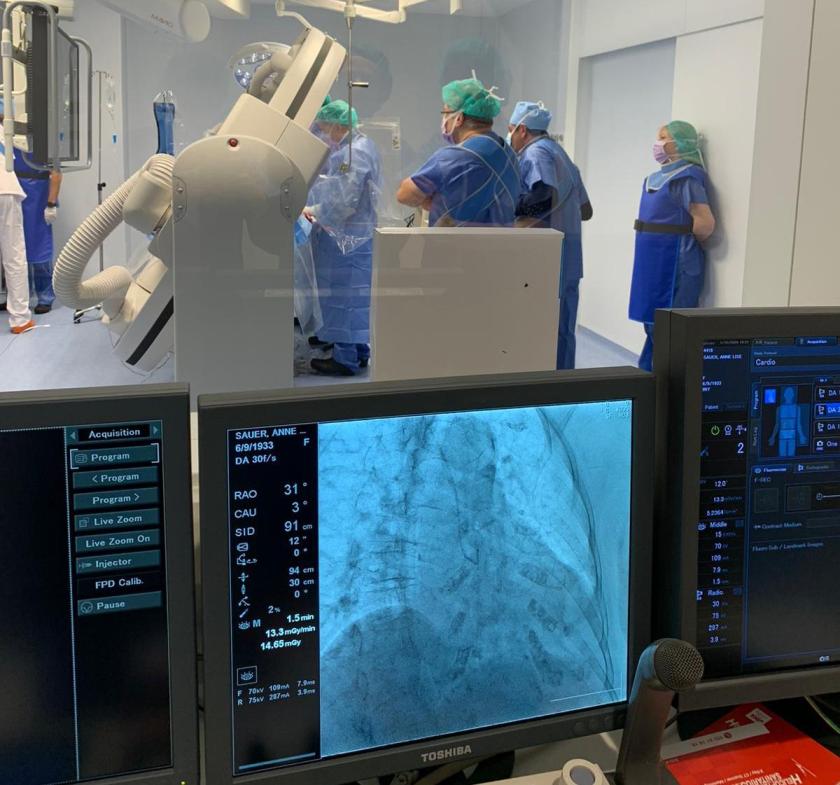
What is Cardiovascular Haemodynamics? - Cardiovascular Haemodynamics in Marbella
13/03/2020Cardiovascular diseases are known to be the number one cause of deaths in Spain. Women are more affected by these conditions than men are. As one of the best hospitals in Spain, Helicopteros Sanitarios Hospital has opened a Haemodynamics Unit. In this article, we talk about cardiovascular haemodynamics and Helicopteros Sanitarios' cardiovascular haemodynamics in Marbella.
What is Haemodynamics?
Haemodynamics is the study of the flow of blood. It centres on exactly how the heart pumps blood through the body. The study of haemodynamics involves a number of the sciences such as chemistry, physics, and biology.
It is the job of your cardiovascular system to deliver blood that carries oxygen and a range of vital nutrients your tissues and cells. Our cardiovascular haemodynamics unit in Marbella is used to assess this integral relationship. Assessments allow our medical professionals to make the correct decisions for patients.
In addition to this. When the assessments show a patient is having difficulty meeting their oxygen needs, they can be classified as “haemodynamically unstable”. The patient is provided with pharmacological or mechanical support allowing them to maintain the much-needed blood pressure and cardiac output.
Results of Haemodynamics
The results of haemodynamic monitoring allows our healthcare team to check whether a patient has:
- An adequate amount of blood so the doctor can see if less or more is needed
- A good blood pressure
- Any structural issues with the heart that can prevent it from working properly
- A good heart rate, so they can determine if the heart needs more support
What does haemodynamic monitoring involve?
Haemodynamic monitory involves some of the following tests that are carried out at our cardiovascular haemodynamics in Marbella, depending on a person’s condition and symptoms.
Blood pressure
Blood pressure can easily be measured by using a sphygmomanometer. This is a device that is traditionally used by doctors to test a patient’s blood pressure. Alternatively, they could use an arterial catheter.
Arterial catheter
An arterial catheter or line is a small plastic tube that is inserted into a patient’s artery. This allows the medical team to check a patient’s blood pressure constantly. In addition to this, it also makes it easy to regularly take blood samples.
Heart function
Several heart function tests are used to determine if the heart is pumping properly. Tests such as these include echocardiography, specialised catheters and an ECG.
ECG monitoring
Electrocardiography monitoring checks your heart’s electrical activity. When a patient is in intensive care, monitoring is carried out by placing circular patches known as electrodes on a patient’s chest. The electrodes are attached to a device which shows the heart’s electrical pattern.
Echocardiography
Echocardiography involves taking an ultrasound of the heart. This procedure uses sound waves to help create an image of the heart. This enables the doctors to see how the heart is working in real-time.
Pulmonary artery catheters
Pulmonary artery catheters can help our doctors to diagnose and monitor a range of conditions. This helps the medical team to choose the best treatment.
Pulse contour cardiac output monitoring (PiCCO)
Pulse contour cardiac output monitoring works by using a specific catheter to give the doctor ongoing information about how well your heart is working.
For more information about our cardiovascular haemodynamics in Marbella contact our department of cardiology.